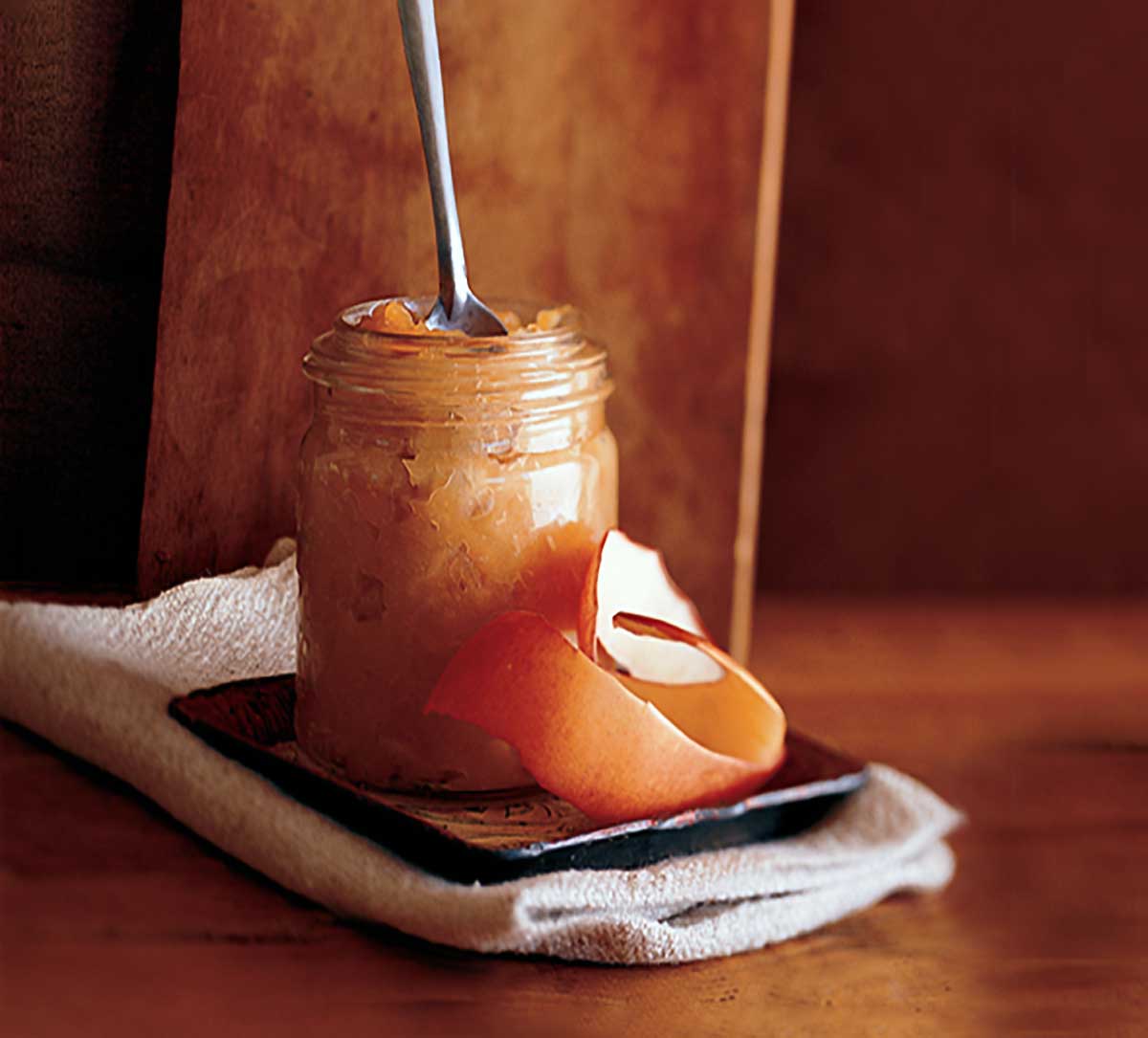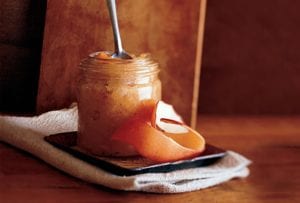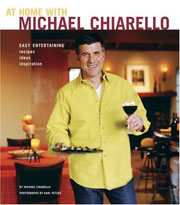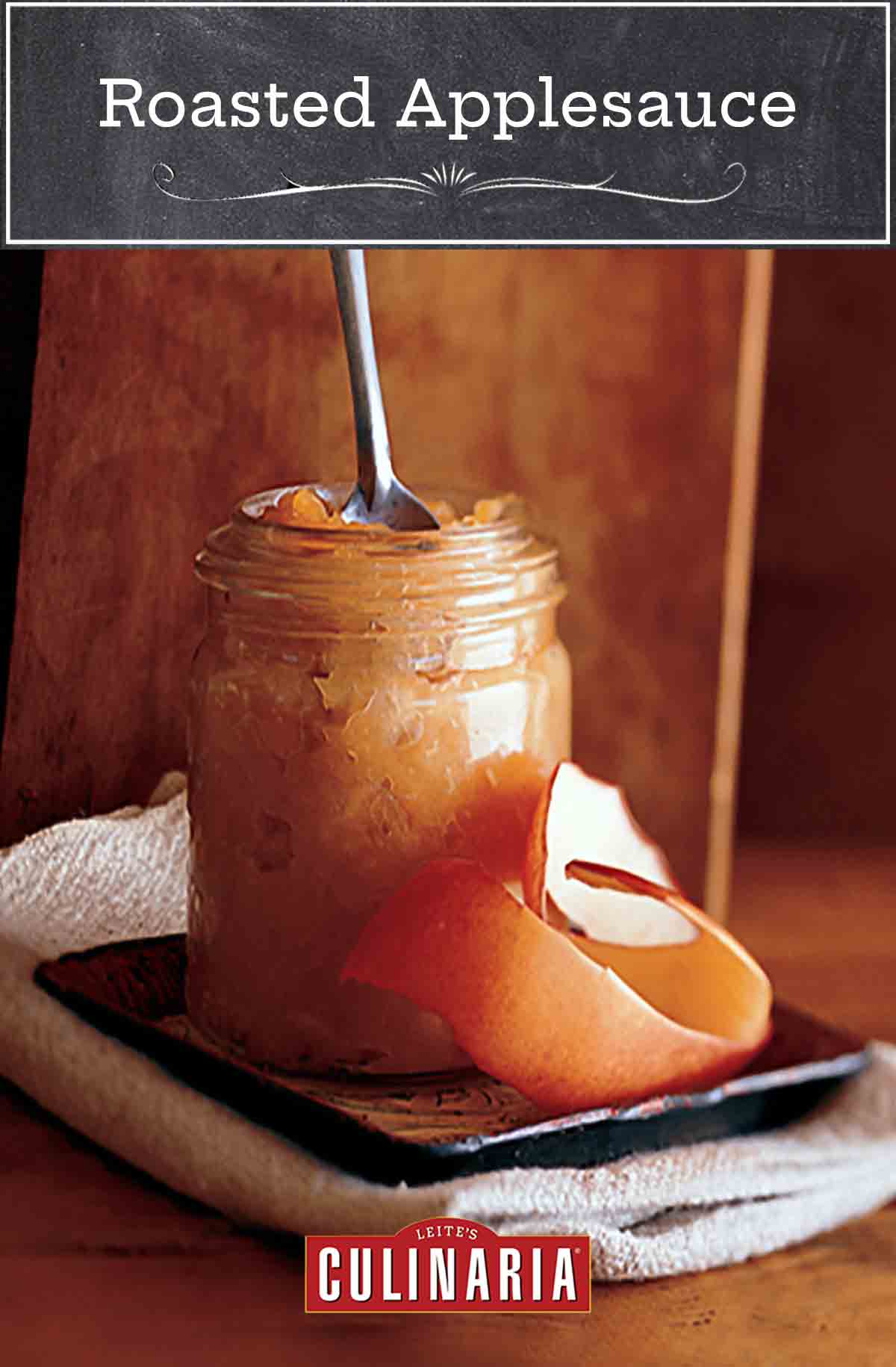
This roasted applesauce recipe, explains its creator, Michael Chiarello, is unlike most homemade applesauce recipes in that it’s not made on the stovetop. It’s made in the oven. And it’s the most brilliant thing to ever happen to applesauce if you ask us. The intense heat intensifies the apple flavor almost so that it tastes caramelized. It’s simple to make, it seems silly to even think of buying it, says Chiarello. We couldn’t agree more.–David Leite
How To Fancy Up This Roasted Applesauce
There’s nothing wrong with spooning up this roasted applesauce as is. (We’ve actually had quite a few batches disappear like that before the applesauce even made it to the fridge.) Although we’re also all about employing countless ways to fancy it up. So should you feel like playing loose and fancy-free with this recipe, here are some suggestions:
- Swap an equal amount of agave nectar, maple syrup, or brown sugar for the honey
- Add a splash of apple cider before roasting the apples
- Stir in 1/4 teaspoon ground cinnamon, allspice, nutmeg, ginger, or a combination
- Toss in a handful of finely chopped crystallized ginger
- Strew some finely chopped fresh herbs, such as rosemary or thyme, over the apples
- Go crazy and stir in some mashed banana or mashed berries, whether fresh or frozen
Want to Save This?

Roasted Applesauce
Ingredients
- 12 (4 to 5 lbs) apples, preferably Gravenstein or McIntosh
- 2 tablespoons fresh lemon juice
- 4 tablespoons unsalted butter
- 1/3 cup honey
- 1/2 teaspoon finely ground sea salt, preferably gray salt*
Instructions
- Preheat the oven to 425°F (218°C).
- Peel the apples and cut them into quarters. Remove the core and cut the apples into 1-inch chunks. As each apple is ready, place it in a large bowl and toss with the lemon juice.
- Melt the butter in a large ovenproof skillet over medium-high heat. When the butter begins to brown, add the apples and salt and sauté just until the edges begin to color, 3 to 4 minutes. Add the honey, stir well, and transfer to the oven. Roast until the apples are soft and lightly caramelized, 20 to 30 minutes. (For a less robust, more traditional applesauce flavor, cover the skillet prior to roasting.)
- For chunky applesauce, reach for a fork, potato masher, or pastry blender and mash to the desired consistency. For smooth applesauce, transfer the apple mixture to a food processor and purée. Serve warm, room temperature, or cold. (The applesauce can be covered and refrigerated for up to 3 days.)
Notes
*What is gray sea salt?
Gray sea salt, also known as Celtic salt, is harvested from the Atlantic ocean, mostly produced in the coastal regions of France. It’s a slightly moist, blueish gray salt with a mineral and clay flavor and is harvested by hand. It’s highly recommended for sweet dishes because it’s not as salty as other salts. Confusing but true. The crystals and their chemical makeup mean that they’re a more delicately flavored salt.
Explore More with AI
Nutrition
Nutrition information is automatically calculated, so should only be used as an approximation.
Recipe Testers’ Reviews
Caramelized apples as applesauce? Oh, my. I halved the recipe, as I wanted to ensure all the apples fit into my cast iron skillet, and it worked perfectly. You just throw the apples and other ingredients into the skillet, sauté, and toss (OK, carefully place) into the oven. Voila — half an hour later, perfectly caramelized, tender juicy apples emerge. Then all that remains is mashing them with a fork (or puréeing them, but I chose to leave mine chunky).
The suggestions to further enhance the applesauce are exciting. I added minced rosemary and a splash of lemon juice, and I used fleur de sel to sprinkle on top. Excellent with pork. I really want to try this with other options such as lemon thyme, mint, apple cider vinegar, and crystallized ginger (as mentioned above in the recipe). This recipe does need a touch of acidity in addition to the lemon juice initially squeezed on the apples, but that is easy to do and likely just a matter of taste.
I made this to go with the kasha varnishkes recipe on the site. Since the author described it as mid-winter comfort food, it seemed perfect for a snowy April day in Chicago. I also happened to have some apples that were a bit past their prime, so applesauce also seemed perfect.
My apples were mostly Gala plus one Granny Smith. I didn’t weigh them, but I trusted that a dozen apples would yield approximately the right quantity. I peeled the apples, per the directions, but I probably wouldn’t peel them in the future as I like chunky applesauce with lots of texture.
I sautéed the apples for 2 or 3 extra minutes, then I roasted them for the full 30 minutes and mashed them a bit, but not too much, with a potato masher. I can also see serving this applesauce as super chunky with even less mashing, or maybe none at all?
And what’s this about covering and refrigerating? Not a chance! After my guests departed, I took a spoon to the leftovers and devoured what might otherwise have been covered and refrigerated!












I decided to save my honey and used maple syrup instead. Is that safer? I’ve used a little butter with my canned tomato sauces…would you consider maple syrup safer?
Linda, that’s some interesting! But as to safety, please take Melissa’s advice and visit the National Center for Home Food Preservation. They’re the experts. We wouldn’t want to steer you wrong.
I’m just starting to can fruits, vegetables, tomatoes, etc. How would I go about canning this applesauce? Bring to boil, sterilize jars and lids, add applesauce, add tablespoon of lemon juice and screw on lids? How long afterward would I boil the filled, lids screwed on jars?
I would not recommend home canning this recipe, for a number of reasons. This recipe has not been tested and shown safe for canning. There are also some aspects about the recipe that raise red flags to me for its suitability for canning, and especially for water bath canning. One is the use of honey. Honey can contain botulism spores, which BWB canning will not destroy. The use of butter in the recipe is also problematic. The fat in butter will transfer heat differently, and may result in the canned product not have been heated evenly throughout. Fats can also encourage the growth of botulism. These things combined make me uncomfortable with recommending home canning for this recipe. There are applesauce recipes out there which can be canned at home and in a BWB. The National Center for Home Food Preservation is a great resource, as are other university sites.
Thanks, Melissa!
Wow….thank-you for all these red flags. I had no idea of these complexities. Thank-you for the heads up and the National Center for Home food Preservation resource. I will do homework!
You’re more than welcome, Linda!